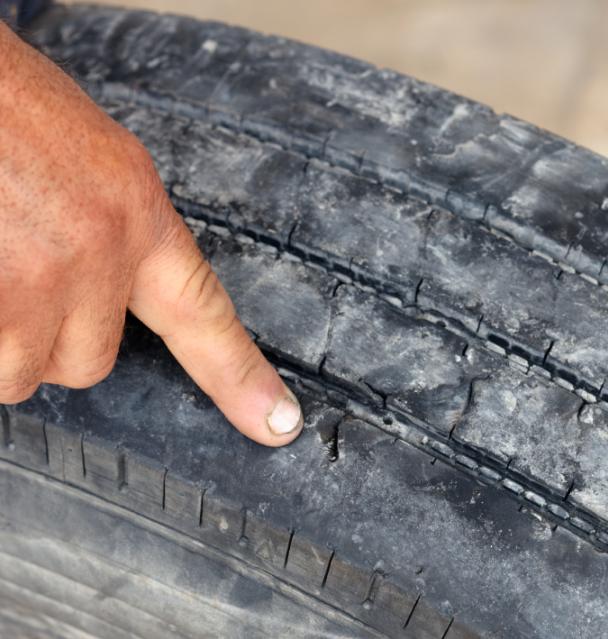If you’re reading this site, there’s a serious chance that you’re a gearhead. We know the minutiae of the Corvette ZR1’s supercharger and can rhyme off the procedure to activate line-lock in the Mustang GT. Keeping an eye on tire wear, though? That seems mundane in comparison.
Folks who have a car simply for commuting necessity may be even further in the dark as to the condition of the rubber on each corner of their family hauler. Gearhead or not, we all have a responsibility to make sure the tires on our vehicles are in good shape. After all, they’re the only thing that actually touches the road.
Technically, a driver is rolling on worn tires the minute they leave the tire shop. The change to a completely worn tire is gradual, sometimes taking years depending a person’s driving habits.
Think of it this way. If a parent sees their child daily, they’re likely not going to realize how much Junior has grown until he’s suddenly too big for the jeans he got for Christmas. It’s only when Nan and Pop appear to say “Look how tall you are!” is the difference realized. Our perception of a tire’s performance is much the same: gradual degradation goes unnoticed until a driver finds him or herself skidding sideways into the weeds.
At the risk of providing a response sure to provoke an eye-roll, the answer is “it depends”. The lifespan and amount of distance a driver can get out of a tire is dependent on a combination of factors:
A winter tire will wear more quickly, for example, thanks to its softer compound that plays well in the snow but gives up its life more quickly when pressed into dry pavement.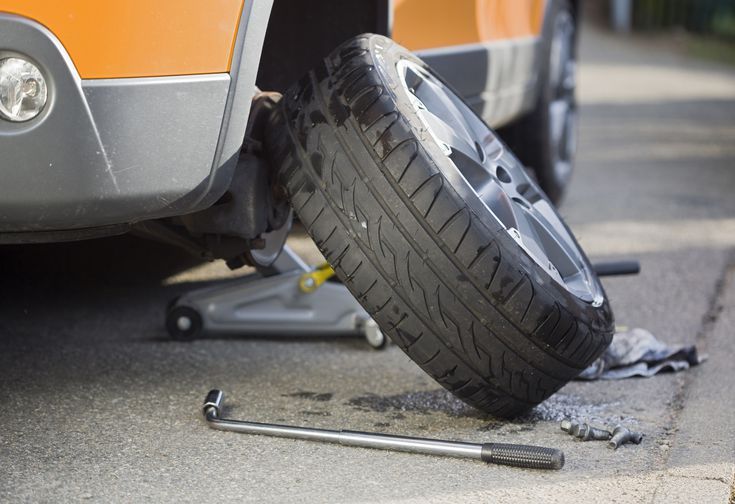 Drivers who accelerate and brake with vigor will find their tires do not last as long as their more sedate roadmates.
Drivers who accelerate and brake with vigor will find their tires do not last as long as their more sedate roadmates.
Tough weather is hard on both tires and the road surface, both of which affects a tire’s lifespan. And drivers who never check their tire’s inflation pressure or wheel alignment will find themselves wearing out rubber faster than a kindergarten kid enjoying his new eraser on the first day of school.
It’s important for drivers to give their tire more than a cursory glance at least once every couple of months or before heading out on a long road trip. Here’s what to look for in particular.
Examine the tread on your tires for any sign of uneven or odd wear. Between the tread blocks of all tires are small plain lines of rubber called ‘wear bars’. When these are exposed, a tire’s tread is worn down to the end of its useful life and has significantly less grip than it did when new. Driving on tires with this amount of wear can lead to a sudden loss of traction.
Driving on tires with this amount of wear can lead to a sudden loss of traction.
Yes, the tale your grandfather used to tell of using a quarter to determine a tire’s fitness is actually true. Put the edge of the coin into the tread, with the Queen going in head first.
If the top of the Queen's head is covered by tread, that's good. If the top of her head is entirely visible, it's time to replace the tire. The exact tread measurement for an end of life tire in Canada is 1.6mm.
Troublemakers like nails and stones stuck in the tire should be obvious and taken care of by a professional tire installer as soon as possible.
Pay attention to the “feel” of your tires as you drive. A rough ride may indicate tire damage or excessive wear. If you notice vibrations or other weird disturbances while driving, reduce your speed and drive with caution until you can safely pull off the road and stop.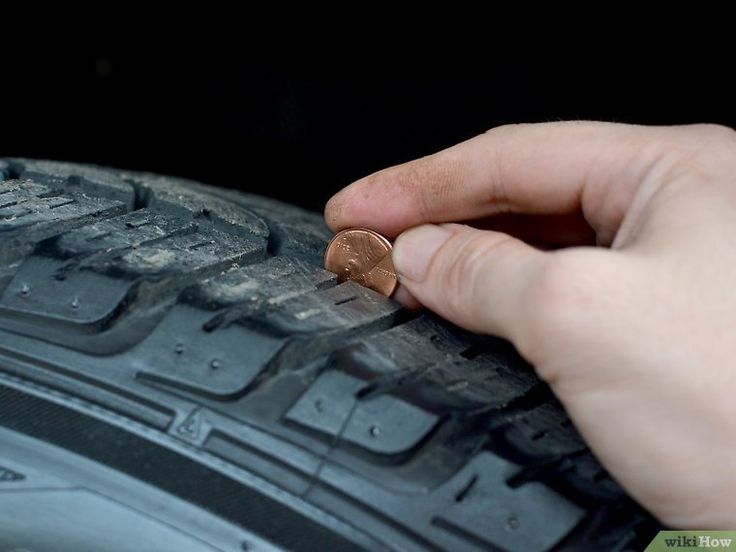
If a tire is damaged, replace it with your spare (call Roadside Assistance if you’re not able to do this yourself). If you do not see any tire damage and cannot identify the source of the vibration, take the vehicle to a tire dealer for a thorough inspection.
The owner’s manual supplied with your vehicle will list the optimal amount of air that should be in each tire, generally stated in the measure of pounds per square inch and denoted as ‘psi’. A tire pressure gauge will be necessary to perform this task, and its instruction manual will have detailed instructions on how to use it.
Underinflated or overinflated tires can wear down faster than expected, have reduced grip, and can consume more fuel. For best results, check your tire pressure when tires are cool – before driving the car or if it has covered less than 5 kilometres at low speed
Even if all of the above is good-to-go on your set of rubber, make sure your tires aren’t aged to the point of it being a problem. Simply because they were purchased two or three years ago doesn’t mean that’s their actual age.
Simply because they were purchased two or three years ago doesn’t mean that’s their actual age.
Every tire has a date code, a four-digit number inside an oval stamped on the tire’s sidewall, generally found at the end of a line of numerals starting with “DOT”. The first two numerals describe the week the tire was made, the last two describe the year. For example, 1618 indicates the tire was manufactured on the 16th week of 2018. Many major tire manufacturers recommend replacing tires at the five year mark, even if the tread is deep.
The experts at Quattro Tire.com will be able to get you a new set of tires for whatever vehicle you’re piloting. Best of all they are fully Canadian.
Also Read: 5 Signs That you Might Need to Replace your Tires
Follow Wheels.ca on
Instagram #wheelsca
Living in rural Nova Scotia, Matthew Guy has immersed himself in car culture for over 30 years and relishes the thought of a good road trip.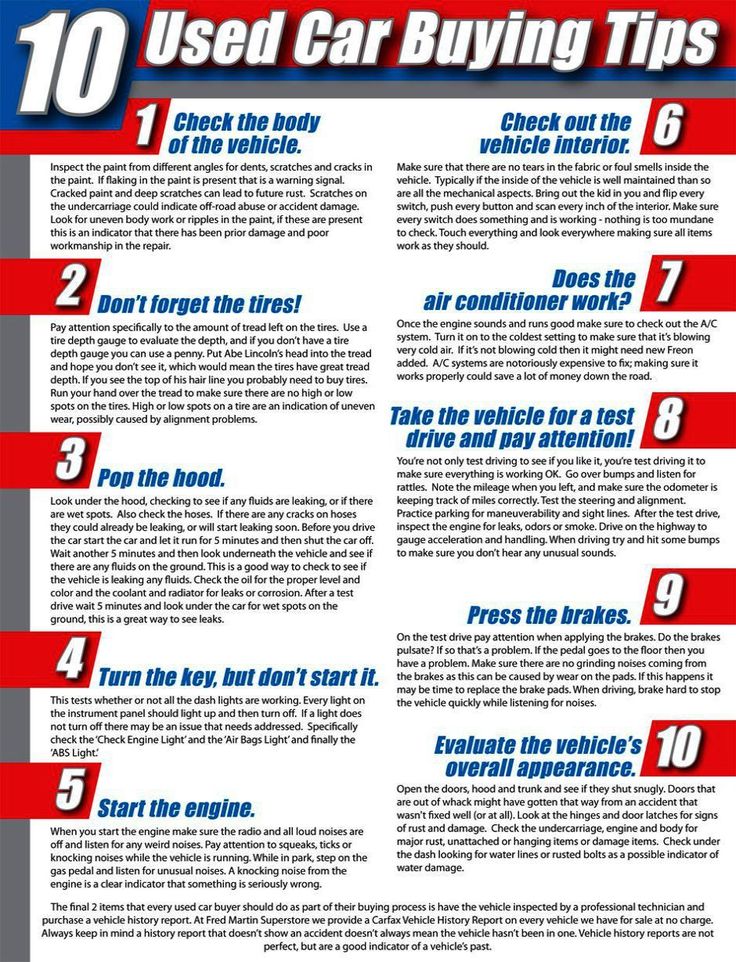 A certified gearhead, he enjoys professionally writing about cars and is very pleased to contribute for wheels.ca.
His work has also appeared on Car Throttle, The Truth About Cars, and in CAA Magazine. Find him on Twitter @matthewkguy
A certified gearhead, he enjoys professionally writing about cars and is very pleased to contribute for wheels.ca.
His work has also appeared on Car Throttle, The Truth About Cars, and in CAA Magazine. Find him on Twitter @matthewkguy
SHARE:
REPORT AN ERROR
JOURNALISTIC STANDARDS
ABOUT WHEELS.CA
Every year in the U.S., tire-related crashes cause 200 fatalities, according to the National Highway Traffic Safety Administration. Thankfully, it’s easy to monitor your tires, and how to tell if you need new tires, with a quick video and some basic information.
The primary functions of the tread on your tires are to grip the road and to divert water that causes hydroplaning. Tires with plenty of tread can help you maintain control and reduce your chances of getting a flat. With a quick monthly check of your tread and tire pressure, you’ll know if you need to replace your tires.
With a quick monthly check of your tread and tire pressure, you’ll know if you need to replace your tires.
Tread wear bars are small, raised bits of rubber that run between the tread blocks. As these bars become even with the top of the tread, it is likely time for new tires. See more about tread wear bars below.
Tires will wear down over time, even if you don’t drive much. Sunlight, heat, and chemicals used to melt snow and ice can reduce rubber flexibility, causing tires to crack, lose air, and eventually fail.
There are many factors that may cause uneven wear, which could shorten the life of your tires. Vehicle alignment, tire pressure, lack of rotation, and/or worn steering and suspension components can all contribute to this problem. To prolong the life of your tires and reduce uneven wear, consider getting them rotated at consistent intervals. At Les Schwab, we recommend getting them rotated every 5,000 milles. The pros at Les Schwab will also conduct a free visual inspection of your steering and suspension components. Schedule your free, pre-trip safety check today.
The pros at Les Schwab will also conduct a free visual inspection of your steering and suspension components. Schedule your free, pre-trip safety check today.
All tires deflate slowly over time, usually about 1 PSI (pounds per square inch) per month. Check yours monthly to keep them properly inflated. If your tires continually lose air or seem to completely deflate without warning, you may need to stop by Les Schwab for tire repair or replacement if necessary. Does the TPMS (Tire Pressure Monitoring System) light often appear on your dash? This could mean your tires have developed a slow, continuous leak.
If you hit a curb, pothole or other obstacle, your tires can develop sidewall bulges due to a break of the inner liner. These bulges can rupture causing a potentially unsafe situation. If you spot a bulge on your tires, get to your nearby Les Schwab and have your tires inspected.
If you experience new vibrations or thumping while driving, it could be a sign that one of your tire/wheel assemblies is out of balance.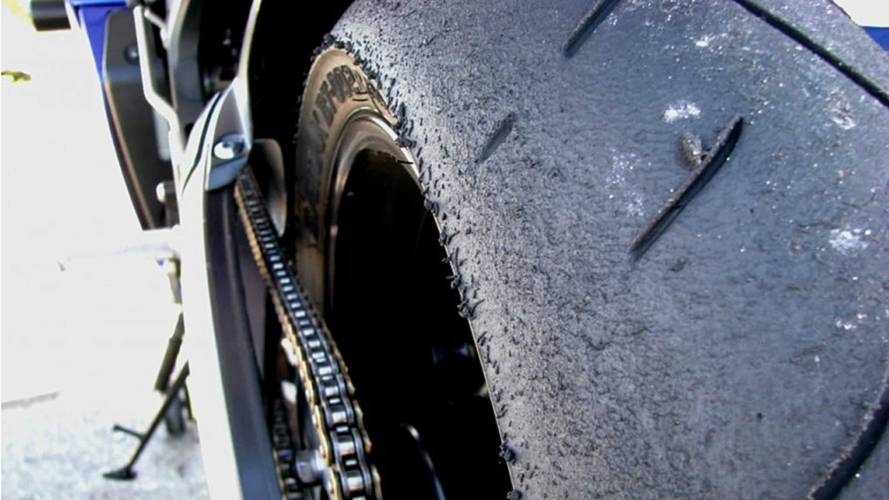 It could also indicate a suspension issue. Stop by your local Les Schwab and our professionals will check your tires, steering, and suspension.
It could also indicate a suspension issue. Stop by your local Les Schwab and our professionals will check your tires, steering, and suspension.
All tires sold in the United States today have what are called tread wear bars. The tread wear bars on your tires are there to help you see how much tread you still have. These wear bars are small, raised bars of rubber in the grooves of your tire. Look at the tread pattern and you’ll see these bars running between the tread blocks.
Look at the tread pattern and you’ll see these bars running between the tread blocks. As your tires wear, these bars will become increasingly flush with the tire’s tread. It’s important to replace your tires before this happens.
Depending on where and how you drive, and the conditions you face on the road, you might consider getting new tires before they reach that point. City driving in mild conditions may allow you to wait until the tread is closer to the tread wear bar before replacing your tires. More adverse conditions, such as rain, snow, and unpaved roads, may require you to replace your tires earlier.
City driving in mild conditions may allow you to wait until the tread is closer to the tread wear bar before replacing your tires. More adverse conditions, such as rain, snow, and unpaved roads, may require you to replace your tires earlier.
An easy way to check the tread on your tires is to do the penny test. Take a penny and place Lincoln’s head in one of the grooves of the tire tread. If you can see all of Lincoln’s head, it’s time to replace the tire.
If the penny goes in enough that the tire tread is at least as deep as Lincoln’s forehead, your tires are generally considered safe and do not need replacing. Check all four of your tires when conducting the penny test.
You’ll find your next set of tires at Les Schwab. You also find our world-class customer service at a tire shop near you that cares about your safety on the road.
SHOP TIRES
In fact, the average life of any tire is 5-7 years, but a lot depends on how the owner treats his car. Aggressive driving, improper seasonal tire storage, unrepaired suspension/balancing problems, incorrect pressure and other errors can significantly shorten tire life. But worn tires can be a serious problem on the road: an increased risk of uncontrolled skidding, hydroplaning, even accidents is the price that drivers and passengers have to pay for using old tires.
Aggressive driving, improper seasonal tire storage, unrepaired suspension/balancing problems, incorrect pressure and other errors can significantly shorten tire life. But worn tires can be a serious problem on the road: an increased risk of uncontrolled skidding, hydroplaning, even accidents is the price that drivers and passengers have to pay for using old tires.
Each manufacturer indicates the so-called wear index on the tire profile, which most often looks like the inscription “Treadwear 100” and means a maximum of 48,000 km on a standard road surface (polygon). In a real environment and often not the most ideal roads, this number actually needs to be divided by 1.5 - we get 36,000 km.
By analogy, if the wear resistance index is 150, then this means “factory” 72 thousand km, 200 - 96 thousand km., and so on.
What are the dangers of worn tires on the road:
adhesion to the roadway deteriorates, which leads to an increased likelihood of skidding, accidents, hydroplaning in case of rainy weather;
reduced cross-country ability in off-road conditions;
increases the risk of a tire puncture while driving.
It is also worth remembering that the issue of tire wear is regulated by traffic rules, and you can get a fine for using “bald” rubber. Knowing what maximum tire wear is acceptable, this is easy to avoid: 1.5-2 mm for summer, and 4-5 mm for winter (a more accurate figure is indicated by the manufacturer).
1. According to the wear indicator on the tire. To find this indicator, you need to inspect the side of the tire and find one of the markings: a triangle, a company logo, a snowflake, or the abbreviation TWI. If the tread has worn down to this indicator, it means that the tire needs to be disposed of urgently.
2. Many people in the old fashioned way prefer to use a 10-kopeck coin. Insert it into the tread with the inscription "10 kopecks" towards you, and if it is visible, the wear level is too high, you need to replace the tire. This method is convenient, but not entirely accurate: by measuring wear in different parts of the tire in this way, it will be difficult to estimate its unevenness by eye, and this is also an extremely important indicator.
3. It is optimal to use a special gauge, depth ruler or caliper for these purposes. This will allow you to measure the wear of the tread in different parts of the tire with an accuracy of up to a millimeter and understand if there is uneven wear.
If measurements show different results in different parts of the tread, it is important to determine exactly how your tires wear in order to understand where and what the operating error is.
If the tread wears more on the sides and the center wears off less, this means that the tire pressure is insufficient and the contact patch with the road is not correct. This leads not only to poor vehicle stability, but also to increased fuel consumption.
If the tread is worn down the middle but the sidewalls are fine, then your tires are overinflated. Sometimes this is done intentionally in order to save fuel, but in this case, the tires will still have to be changed ahead of schedule.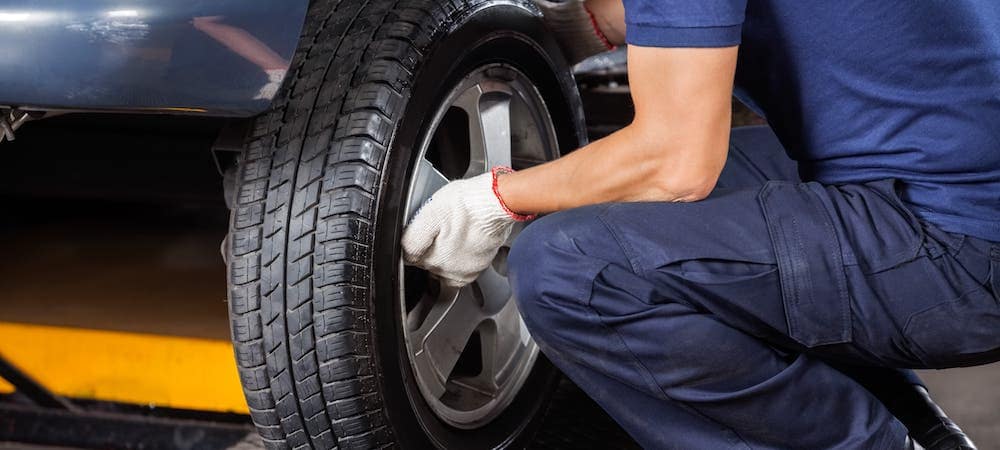
There is also the possibility of increased wear on the inside or outside of the tread - this indicates an incorrect camber. A visual table with wear options and their causes:
Cracks on the sides of tires can indicate frequent off-road driving, improper storage, low-quality rubber or long service life, as well as incorrect tire pressure.
Bulges or "hernias" on the sides of the tires appear as a result of the side part hitting hard obstacles. Tires with such damage are not recommended.
Dents on the tread indicate insufficient depreciation and unadjusted camber. Having found such damage, it is necessary to drive the car to the service and make sure that the suspension is in good condition.
Individual wear spots on the tread indicate aggressive driving / braking, skidding with wheel locks, or prolonged parking of the car in one position.
Most often, this is required for the sale and purchase of used tires in order to orient the buyer in the degree of their wear. Many sellers give this figure at random, but this method has nothing to do with the actual assessment of the degree of tire wear. It is also important to understand that a conditional 50% wear for a summer tire is an acceptable value, while 50% wear of a winter tire tread is a sign that the tire cannot be used. Therefore, it is important to know how to accurately determine the percentage of tire wear so as not to get into an unpleasant situation.
Many people divide the actual tread height by the height of the same, but new tire, and get a certain percentage of wear. This would be correct, if not for one BUT: we cannot physically erase the tread to zero, and the law prohibits the use of tires with a tread below the permitted values.
You can calculate actual tire wear by dividing the difference between the new tire height and the actual tire height by the difference between the new tire tread height and the minimum possible tread height for that tire, and then multiplying this number by 100.
If it is impossible to find out the height of the same, but with a new tire, use the average values of your tire type:
| Tire type | Average tread height at start of use |
| Winter tires with Scandinavian tread | 10 mm |
| Winter with regular or asymmetric tread | 9 mm |
| High-speed winter | 7 mm |
| Summer tires with classic tread | 8 mm |
| Summer speed | 7 mm |
You can check summer tires for wear a little less often than winter tires, since in summer the tread depth is not so important for patency.
If you have assessed the condition of your tires on all of the above factors and realized that the tires are worn out, be sure to replace them with new ones as soon as possible.
The task of calculating the residual life of a tire can arise both when assessing the condition of one's own wheels, and when buying used rubber. In addition to indirect signs, the residual tread height becomes such a criterion. But it can also be calculated based on subjective assumptions, which is what sellers usually do.
Contents of the article:
here and the unknown with the initial depth of the Age and uncertainty with a maximum allowable residual. The question requires objectivity.
The suitability of tires for further use is determined by their ability to meet safety standards, and is set by the manufacturer using wear indicators or numerical values.
In the absence of such, one should be guided by the requirements of the traffic rules, where the minimum allowable tread depth is set, depending on the type and purpose of tires.
Both do not take into account all the features of wear, therefore, taking care of your own safety, you need to approach the issue as objectively as possible, and not be content with formal criteria.
See also: What is wheel bolt pattern and how to measure it
So, for example, if the tread remains within the allowable millimeters, but the terrain is already severely distorted due to uneven wear, the rubber has lost its properties or the initial height was more than typical, then the tire must be sent to the scrap, although according to numerical indicators it meets the standards.
Most of the assessment methods are available to the average user, although not all of them.
A lot can be assessed visually. For example, the color of rubber loses saturation over time, tires become characteristically whitish. This is a good indication that aging has occurred due to oxidation of the tire material.
Mechanical damage is also visible, both natural in the form of age-related cracks and delamination, and artificial, traces of numerous repairs, cord exposure due to cuts, profile bulges under pressure (bumps).
Related article: Spikes or Velcro, which tires are better to use in winter
Very noticeable uneven tread wear in the form of a saw or bald spots. Such a wheel is dangerous when braking.
To estimate the actual residual value, you need to know the original tread value, as well as the minimum allowable for a particular tire model. A big mistake that sellers most often deliberately make is to consider percentages based on absolute depth.
Do not use the tire until it is completely worn out. Moreover, based on the purpose, rubber can completely lose its properties even with a sufficiently deep pattern.
This applies to winter, mud and all season tyres. They must effectively remove the soft component of the road surface from the contact zone, which is possible only with a sufficiently deep tread.
This is the most convenient way to determine tire wear by the manufacturer. In the rubber of the tread, recesses are made in the form of numbers, which disappear as the rubber wears out. The largest of the remaining ones determines the resource height of the relief.
Other indications are also possible, all of them are simple and most intuitive.
Interesting: What and how to glue the molding on the car door
Up to the use by some manufacturers of color indication, when rubber of a different shade is embedded in the depth of the tread. A worn treadmill will then change color to contrast with the rest of the surface.
A worn treadmill will then change color to contrast with the rest of the surface.
Although it is almost impossible to find modern tires without wear indicators at all, the old methods continue to work. Between the checkers or tracks of the tread, you can place a caliper depth gauge, which will show the remaining depth in millimeters.
All that remains is to subtract the minimum allowable value from the resulting number. In the absence of a caliper, you can use a ruler, or even just a coin.
Wheel alignment significantly affects rubber wear, up to complete destruction of the tread for a short run with a strong deviation from the norm.
A distorted toe value results in the formation of a characteristic "saw" on the tracks, which is clearly visible when looking along them. The plane of rotation of the wheel does not coincide with the direction of movement of the car, which is why the tread constantly slips in the contact zone, this causes sawtooth wear.